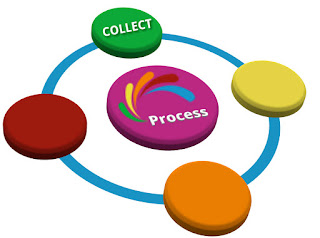| The focus today continues on the process of COLLECTING content. Finding content implies that you will also prepare it for the Web environment of an eFolio site. It makes sense that your collected items must be in digital format -- ready for the Web -- before posting any content to the pages of your site. |
Organization: When working with files, many users find it helpful to configure a system of topical folders for content in their local storage space before uploading content to myeFolio. Post larger items such as video files in the cloud (Google Drive, iTunes, Microsoft's OneDrive, YouTube, ScreenCast or others) and prepare your links.
Naming Files: Filenames influence URL behaviors and are an important part of your eFolio site. Editing file's name so it describes the content is important but it is equally necessary to make sure that the name allows the file to display correctly in most situations. Guidelines include:
- No special characters -- Use letters a-z, A-Z, numbers 0-9, and, if needed, hyphens (-), underscores (_) or periods (.) are accepted. Other characters could keep files from displaying.
- No spaces -- Spaces often display as an underline confusing viewers. Plus, browsers often require that a filename space be encoded as a plus-sign (+) or %20 -- that's tedious!
- Start with a letter -- This is simply good practice for technical reasons.
- All lowercase or camelCase -- Your preference needs to become your standard practice as there is no absolute in this. Although computer operating systems are case insensitive, most Web server operating systems are case sensitive.
- Short filenames -- Strive for a name that is no more than 30 to 50 characters (that's about four or five words in length.
- Data file formats -- Save your files in PDF or HTM format whenever possible so your content will be viewed as intended regardless of locally installed software.
- Image file formats -- GIFs, JPEGs, and PNGs are the formats used to display images on the Web. Each has its own strengths and weaknesses.
- Media file formats -- There are several choices when it comes to video formats: MP4, flv, mov, qt, wmv, or WebM are most common. For both Web and mobile viewing MP4 is preferred.
- Audio file formats -- Usage indicates that MP3 is the most common sound file format today.
Exploring Content Types from the myeFolio Perspective
It's tough to separate "finding and gathering content" from "adding it to your account" so, before you read the next post, you might already be thinking about adding "your stuff" to myeFolio.
Let's assume that you decide to begin by writing your Welcome Message, finishing your Resume, choosing some Assignments or Work Samples, grouping your Educational Experience and locating some Photographs to help viewers see you in real life situations!
To do so, there are several content item forms (found in myeFolio by opening the New Content panel) that you could choose from to add the five (5) kinds of content mentioned above to the My Content collection. The following grid suggests the New Content forms you might use to add the artifact listed at the left.
Artifact
|
General > Basic |
Upload > File |
Education > Activity |
Web Content > Google Drive |
Education > Course Taken |
Education > Credential/Degree |
Upload > Image |
| Welcome Message | x | x | x | ||||
| Add Your Resume | x | x | |||||
| Assignments or Work Samples |
x | x | x | x | |||
| Educational Experience | x | x | x | x | |||
| Relevant Pictures | x | x |
The choices above are not exclusive. Many content item types (field-based completion forms) are available in myeFolio. A complete listing with descriptions is available online.
[About Photographs: Be yourself, but only include images that would be "to your advantage" when viewed by a potential employer -- in most scenarios an eFolio site does not benefit from the more casual "social interaction focus" that Facebook users often share although personal images should be included if it adds to your story.]Posted resource guides will answer many of your questions about how to complete basic myeFolio tasks.
In the next post, you will begin to filter the "greater collection of content" by selecting specific artifacts you'll want to use at this time.
Take Action: Continue looking for content...that which you already have or creating what you need. Digitize and prepare your files for the Web. Organize your files so you can find them when you're ready to upload each as content to myeFolio.

